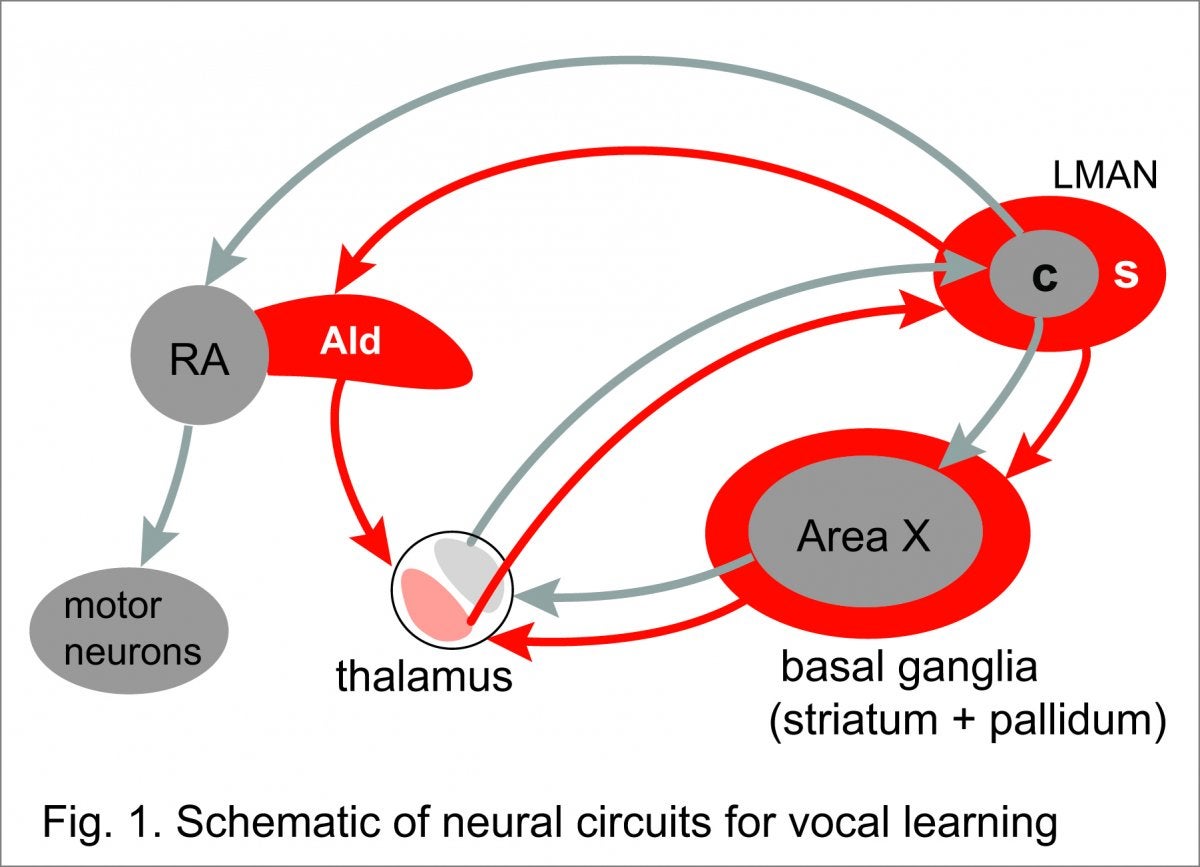As described on Sarah’s page, parallel cortico-basal ganglia circuits offer a neural architecture that can process related but distinct types of information. In our working model the core circuits drive vocal motor output and hence are a “performance” pathway, while the shell circuits are a “comparator” pathway that evaluates similarity of self-generated babbling sounds to tutor goal sounds. We think it is likely that as the shell circuits perform evaluation of what utterances constitute a good match to the goal, they somehow instruct the core circuits to refine their motor output. But that means there must be points of information exchange between shell and core pathways. I am investigating possible ways in which the information processed in shell and core pathways is integrated. The specific hypothesis I am currently investigating is whether both RA (core pathway) and AId (shell pathway) converge in the thalamus in juvenile birds during skill learning. That would bring together information from core and shell pathways through the cortex, as well as converge with basal ganglia outflow to thalamus.
 |
 |
The confocal image on the left depicts the thalamic nucleus DLM following tracer injections into RA and LMAN-core. The red cells project to LMAN-core, and the green axons from RA are clearly intermingled, indicating that RA axons make a connection with thalamic cells that project back to LMAN-core in juveniles. In the schematic on the right, gray represents core regions and red represents shell regions.
In my free time I am an avid rock climber.
